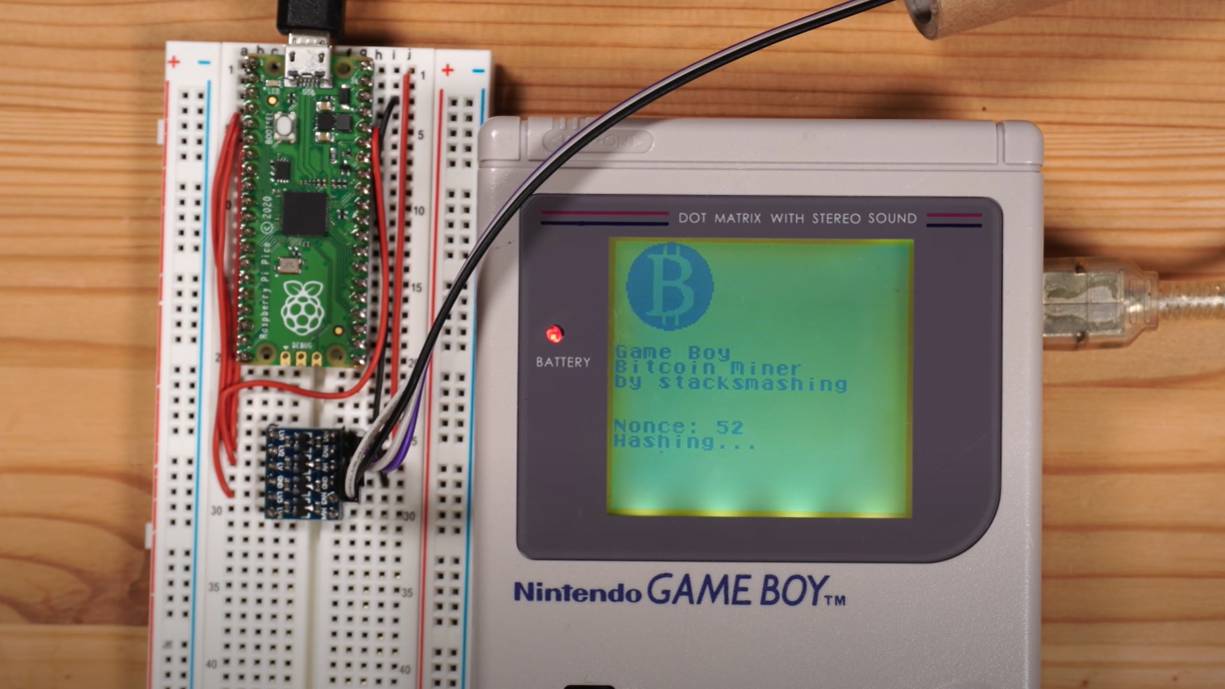You can mine Bitcoin on a Nintendo Game Boy — here's how it works
The Game Boy can mine Bitcoin, but it'll take a few million years

With financial corporations such as Mastercard and PayPal now accepting select cryptocurrencies, it comes as no surprise there's been a recent surge in Bitcoin mining. GPUs are the best way to do this, but seeing as it can be hard to get your hands on a decent one these days, this YouTuber found another solution.
Known for modding age-old devices, YouTuber stacksmashing has successfully found a way to mine Bitcoin on a Game Boy. Who needs an Nvidia GeForce RTX GPU anyway?
- What are NFTs?
- How to buy Bitcoin
- The best Nintendo Switch game deals of March 2021
Don't expect to just dig out your old Game Boy and start earning some Bitcoin. As spotted by Tom's Hardware, the YouTuber had to add a few tweaks to successfully mine on a device that came out in 1989. That alone hints at how slow it can mine.
As explained, the modder had to find a way for the Game Boy to connect to the internet — an essential part of connecting to the Bitcoin network. This was done by using a Raspberry Pi Pico and modified Nintendo Game Link Cable, with the Game Boy connected to the Raspberry Pi Pico through a logic shifter and the Pico attached to a computer.
So, how well did it work? Compared to application-specific integrated circuit (ASIC) miners today, which offer up to 100 terahashes per second, the Game Boy delivered 0.8 hashes per second. That's considerably slower than modern machines, but hey, at least it works.
Unless you have millions of years to spare, you're better off finding other options to get Bitcoin. If you are looking, here's how to buy Bitcoin.
Sign up to receive The Snapshot, a free special dispatch from Laptop Mag, in your inbox.

Darragh Murphy is fascinated by all things bizarre, which usually leads to assorted coverage varying from washing machines designed for AirPods to the mischievous world of cyberattacks. Whether it's connecting Scar from The Lion King to two-factor authentication or turning his love for gadgets into a fabricated rap battle from 8 Mile, he believes there’s always a quirky spin to be made. With a Master’s degree in Magazine Journalism from The University of Sheffield, along with short stints at Kerrang! and Exposed Magazine, Darragh started his career writing about the tech industry at Time Out Dubai and ShortList Dubai, covering everything from the latest iPhone models and Huawei laptops to massive Esports events in the Middle East. Now, he can be found proudly diving into gaming, gadgets, and letting readers know the joys of docking stations for Laptop Mag.
